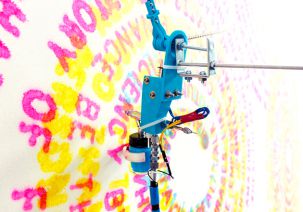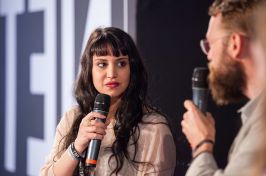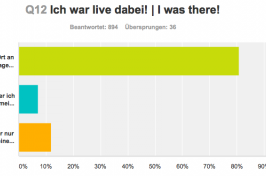New this year, re:publica will feature a Gallery space curated by Autodesk that explores how technology is radically transforming the way things are designed and made. Showcasing real-life projects like a 3D printed dress, an innovatively designed hospital in Rwanda, and the world’s largest 3D-printed aircraft cabin component, the Gallery will highlight how a new industrial revolution is changing how we work, create and live.
The Gallery space will also feature a real-time, interactive robotic Twitter wall. Designed and fabricated by The Living, an Autodesk Studio, the wall features a “brush-bot” robot that searches Twitter for messages with the #robotwall hashtag, and then air-brushes them into growing spirals of thought. It’s a collaborative art piece generated by re:publica attendees with a robot artist. The more you tweet, the grander the scale of the piece.
During re:publica TEN, join the conversation and explore what’s possible when humans team up with robots! Complete a statement or answer one of the questions below in a tweet — make sure to include #robotwall — and you may even see your response become part of the art wall.
- Why, Robot! You've single handedly _________! This is your finest work yet! #robotwall
- My robot and I will _________. #robotwall
- Robots will never be able to _________. #robot wall
- What could a robot colleague do for you? #robotwall
- I want robots because _________. #robotwall
So come by the STATION’s main hall at re:publica to interact with the Twitter wall and check out cutting edge projects from around the world!
On Display at the Autodesk Gallery
Bridge to the future:
Combining digital design technology, robotics, and traditional industrial production, MX3D is pushing the boundaries of what’s possible with 3D printing. Using 6-axis robots that 3D print metal in mid-air, the company will print a bridge over a canal in the centre of Amsterdam —demonstrating the tantalizing possibilities for printing large-scale, functional objects.
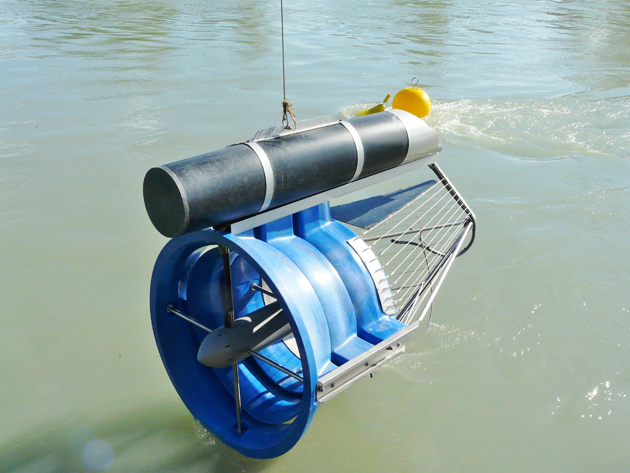 Clean energy with turbines by Smart Hydro Power
Clean energy with turbines by Smart Hydro PowerClean energy with turbines by Smart Hydro Power
Empowering rural communities:
German-based Smart Hydro Power is working to bring clean energy to remote parts of the world. Their micro-hydro power plants produce electricity using power generated from the natural flow of water. Since installing its first system in Peru in 2011, Smart Hydro Power has delivered turbines to more than 40 locations, including communities in Nigeria, Colombia, Indonesia, and even a castle in Germany.
A building that heals:
MASS Design builds for impact—social, economic, and environmental. A perfect example of that philosophy, is the Butaro District Hospital in rural Rwanda. Using local materials, sustainable design, and labour-intensive practices, the MASS team was able to save two million dollars in construction costs, all while creating over 4,000 new jobs. Designed to reduce the transmission of airborne disease through innovative thinking, including overall layout, patient and staff flow, and natural cross-ventilation, the hospital is human-centric design to its very core.
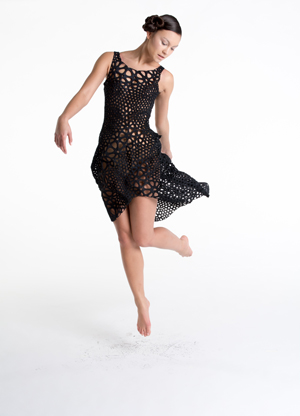
The Kinematic dress
Once designed, a typical dress needs to be pieced together. The Kinematics dress designed by Nervous System doesn’t. It’s created within design software directly from body scans, and then 3D printed in nylon as a single folded piece. Thanks to parametric body modeling, the dress can be custom fit, and style, flexibility, and pattern can be tailored to individual tastes. It’s certainly not your mother’s dress, and it just might be the future of fashion.
Less is so much more:
The bionic partition project is Airbus’ effort to build a lighter, stronger, and more environmentally compatible aircraft. Using generative design technology, 3D printing, and entirely new materials, Airbus is pushing the boundaries of commercial flight by employing the techniques of biomimicry and evolutionary algorithms to imitate how nature accepts or rejects designs. The result is the bionic partition. It’s the world’s largest 3D-printed aircraft cabin component and the first to use a brand new high-strength metal alloy, Scalmalloy.
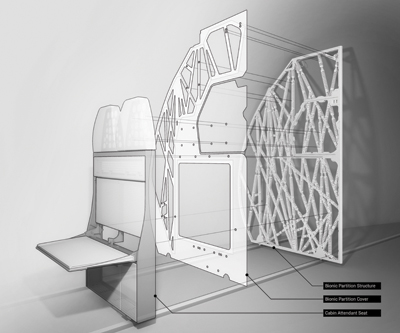
The bionic partition project by Airbus
Photo credit: Autodesk

